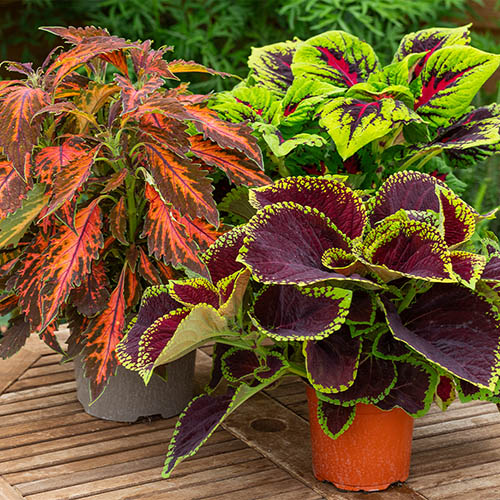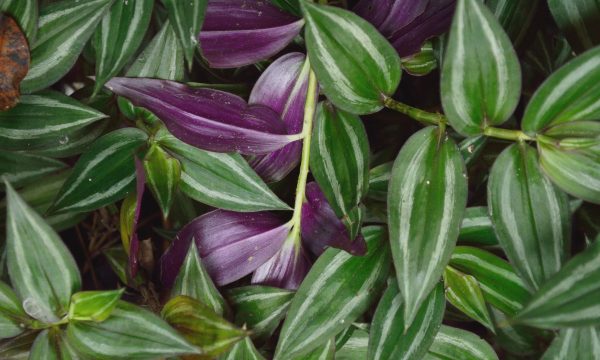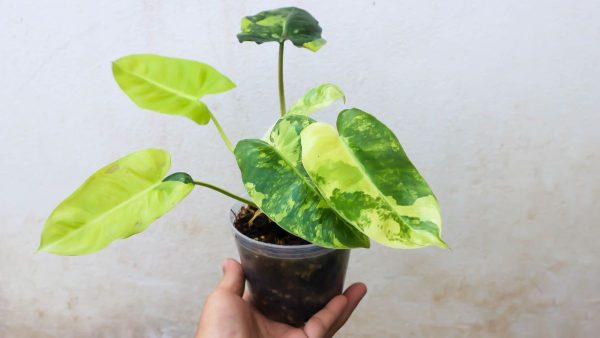Coleus plants are popular due to their beautiful, decorative, and vibrant feel.
These versatile plants can be a great addition to your summer league of gardens and enhance the appeal of your entire home or its indoor.
These beautiful plants are a feast for the eyes and versatile in their care and propagation.
The colors and patterns in the Coleus plants motivate you to have them, but sometimes, propagation can be challenging.

Over the years, we’ve tried various methods to propagate our Coleus collection, and you will learn some beginner-friendly approaches.
Let’s take a look at these Beginners Friendly Ways to Propagate Coleus.
1. Growing Coleus in Water
This method is popular due to its simplicity and high success rate.
Step 1: Select a Healthy Stem
Choose a healthy coleus plant with strong stems. ideally 4-6 inches long. Ensure it has a few leaf nodes (the points on the stem where leaves are attached).
Step 2: Prepare the Cutting
Using a clean, sharp pair of scissors or gardening shears, cut just below a leaf node.
Remove the leaves from the bottom half of the stem to prevent rotting when submerged in water.
Step 3: Root in Water
Place the cutting in a glass or jar of water, ensuring the leaf nodes are submerged but the remaining leaves are not.
Keep the glass in a warm, brightly lit area without direct sunlight. Change the water every few days to keep it fresh.
You can use toothpicks or skewers to support the cuttings and keep them from touching the bottom of the container.
Place the coleus stem cuttings in the water, ensuring that at least one leaf node is submerged.
Place it in a bright location, but avoid direct sunlight as it can cause algae growth.
Step 4: Transplant
Roots should emerge in about 2-3 weeks. Once they are a couple of inches long, the cutting can be transplanted into soil.
Change the water every few days to prevent stagnation and ensure proper oxygenation for the developing roots.
Monitor the water level and replenish it as needed to keep the submerged part of the cuttings moist.
Once the roots are well developed and they grow about 2-4 inches long, you can now transplant the cuttings into pots filled with potting mix or soil.
2. Growing Coleus in Soil
Propagating directly in the soil can sometimes yield even faster rooting.
Step1: Prepare Cutting
Just like with water propagation, select a healthy stem and prepare it by cutting below a leaf node and removing lower leaves.
Again, aim for a 4-6 inch long cutting to remove the lower leaves and reduce moisture loss.
Otherwise, these roots may rot, and the plant will die before even giving birth or proper growth.
Step 2: Rooting Hormone
Dipping the cut end in rooting hormone can enhance rooting success but is not strictly necessary.
Fill small pots with well-draining potting mix and make sure the pots have drainage holes at the bottom to prevent waterlogging.
Moisten the soil lightly before planting the cuttings.
Using your finger, make a small hole in the center of the soil in each pot.
Dip the cut end of each cutting into rooting hormone powder.
Step 3: Plant in Soil
Insert the cut end into a pot filled with moist potting mix, making sure at least one leaf node is buried under the soil as this is where roots will develop.
Plant the cuttings into the prepared holes in the soil, ensuring that the leaf nodes are buried in the soil.
Now, press the soil around the base of the cuttings to keep the formation.
Step 4: Maintain Humidity
Cover the pot with a plastic bag or a clear plastic container to create a greenhouse effect, maintaining high humidity around the cutting.
Water the newly planted cuttings thoroughly, ensuring that the soil is evenly moist but not waterlogged.
You can place the pots in a warm, away from direct sunlight but in a bright location because Coleus cuttings prefer bright, indirect light for optimal growth.
Also, mist the cuttings with a spray bottle to maintain humidity and drying out prevention.
Step 5: Wait for Roots
Over the next few weeks, check regularly for signs of root development.
Once roots have formed and the cuttings have established themselves, you can then transplant them into your garden, but handle the cuttings carefully.
3. Growing Coleus from Seeds
Coleus can also be grown from seeds, which might be ideal for starting many plants at once:
The first step is to select seeds. Choose high-quality coleus seeds from a credible supplier, harvest seeds, or even from Walmart stores. (I’ll recommend these)
If your seeds are not high quality, then you might not get the best results out of it.
Once you have your healthy seeds, fill the seed-starting trays with a seed-starting mix or potting soil by making sure the soil is moist and is not waterlogged.
If using seed-starting trays, make sure they have drainage holes at the bottom.
Step 1: Sow Seeds
Start by sowing coleus seeds on the surface of a moist potting mix in a tray or pot. Do not cover the seeds with soil as they need light to germinate.
Place one or two coleus seeds in each cell of the seed-starting tray or pot.
Press the seeds lightly into the soil, but do not bury them too deep.
Cover the seeds with a thin layer of mix to retain moisture.
Step2: Maintain Warmth and Moisture
Cover the tray or pot with plastic wrap or a clear plastic lid to keep humidity high. Place in a warm spot with bright, indirect light.
Place the trays or pots in a warm location with indirect sunlight.
Yes, this is extremely important for Coleus seeds to germinate around 70 to 75°F or 21 to 24°C.
Cover the trays or pots with a clear plastic dome or wrap to create a mini greenhouse effect and retain moisture.
Water gently using a watering can or spray bottle to avoid disturbing the seeds.
Step 3: Germination
Coleus seeds typically germinate within 2 weeks.
Once seedlings appear, remove the plastic cover, place the trays in a bright location with indirect sunlight, and continue to keep the soil moist with the best and strongest seedlings.
Water the seedlings regularly, ensuring that the soil remains consistently moist but not waterlogged.
Once they have developed their first “True Leaves,” fertilize them with a balanced liquid fertilizer.
Step 4: Transplanting
When seedlings have grown their second set of true leaves, they can be carefully transplanted into individual larger pots or your garden.
Harden off the seedlings by gradually exposing them to external temperatures before transplanting them into the garden.
What to Do If Coleus isn’t Propagating?
1. Ensure Optimal Conditions
You must be doing something wrong at some point or other, such as improper light and temperatures, which is why most Coleus cuttings prefer warm conditions to root.
For that, you need to maintain a temperature of around 21 to 24°C and avoid direct sunlight.
If natural light is insufficient, you can use grow lights and even LED lights.
Also, high humidity helps prevent the cuttings from drying out.
You can increase humidity by covering the cuttings with a plastic bag or dome, making sure to allow for some air circulation to prevent mold growth.
2. Use Healthy Mother Plants
Only take cuttings from healthy, vigorous plants.
Sickly or stressed plants are less likely to produce viable cuttings.
If you prefer seeds, they should also be high quality in all cases.
3. Improve Water Quality
If you are planning to root in water, use distilled or rainwater instead of hot, warm, or cold water. Distilled water might be more conducive to root growth than tap water if it has chemicals in it.
4. Refresh Water Regularly
Change the water every few days to keep it clean and oxygenated, which is crucial for encouraging root growth.
Otherwise, don’t expect it to grow confidently and properly.
5. Try Rooting Hormone
Coleus cuttings can root without it, but using a hormone can increase the chances of success. Dip the end of your cuttings in a rooting hormone powder or solution before planting it.
6. Check for Diseases or Pests
Sometimes, the reason cuttings fail to root is disease or pests. Inspect your cuttings and the mother plant carefully and take steps to treat any issues you find.
It will grow again.
7. Adjust Cutting Length and Leaf Size
Make sure the cutting is not too long. It should be 4-6 inches, no more or less.
Also, the leaf area can be reduced by trimming large leaves to reduce moisture loss and focus root development.

